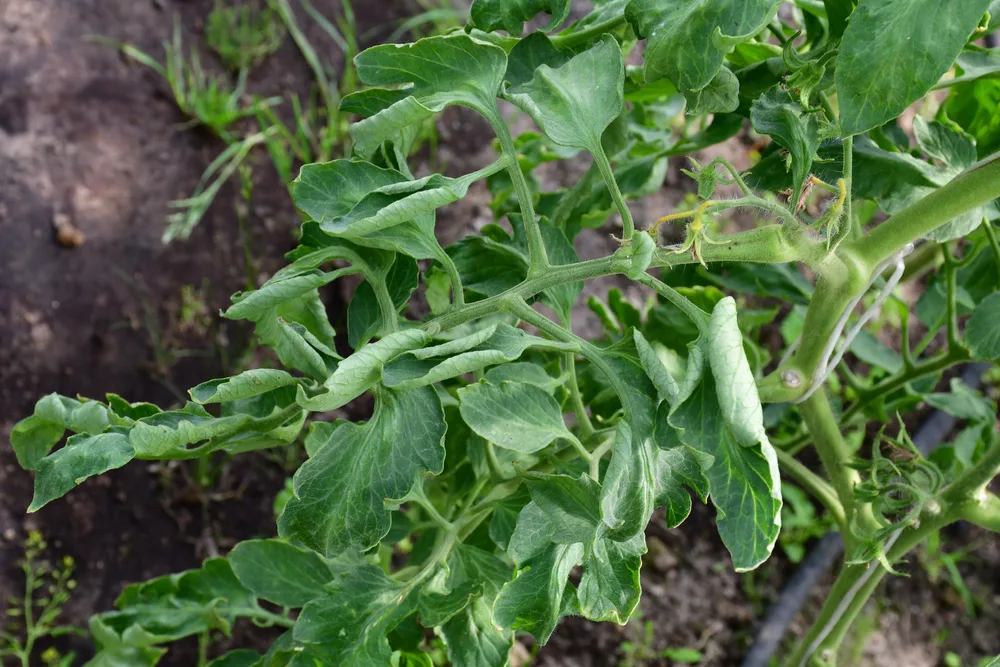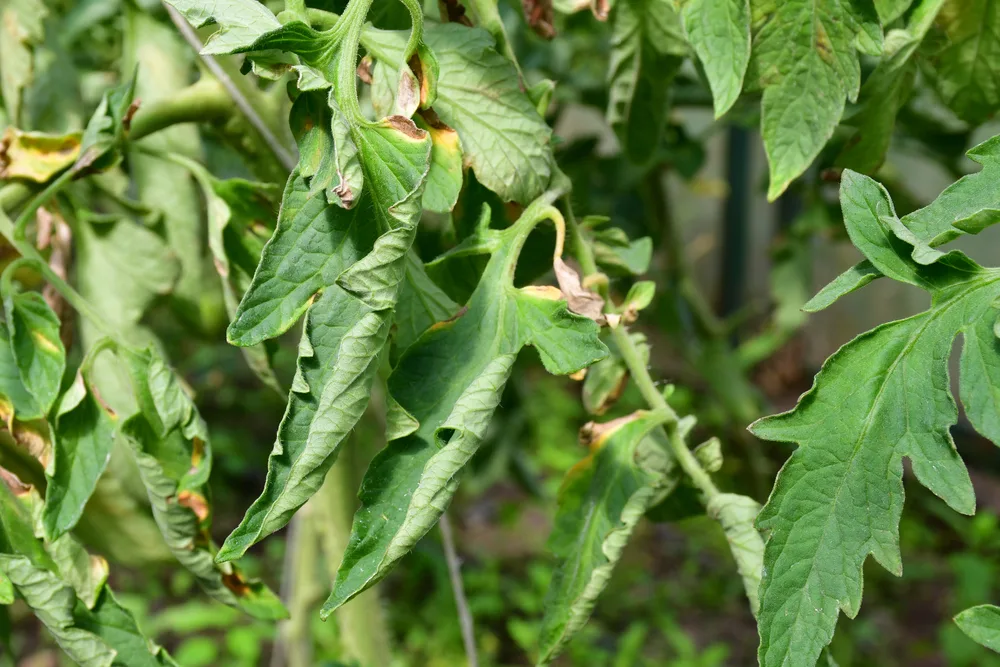When tomato leaves start curling, it’s a sign that something’s wrong, either in the environment or within the plant. Addressing this issue is crucial to ensure a healthy harvest.

Here’s how to figure out what’s causing it and what you can do to help your plant recover.
First, inspect your plant closely to identify the reason for the leaf curl. Common causes include lack of water, herbicide exposure, and diseases. Here are the top five reasons for tomato leaf curl and how to fix each one.
1. Harsh Growing Conditions
Tomato plants can face various challenges while growing. Experts note that tough growing conditions are the most common and easily fixed cause of leaf curl.
“Hot weather, lack of moisture, and heat stress primarily drive leaf curl,” says Dr. Ajay Nair, Extension Vegetable Specialist at Iowa State University. Leaves, especially lower ones, curl up to conserve water.
This curling is a defense mechanism. In hot and dry conditions, tomato plants lose more water than they can absorb, leading to curled leaves to minimize water loss and sun exposure.

What to Do:
- Water your plants well, aiming for 1 inch per week.
- Use drip irrigation or a hose at the root zone, avoiding overhead watering.
- Add a 2-inch mulch layer to retain soil moisture.
- Leaf curl from tough conditions usually resolves as the environment improves without long-term effects on growth or yield.
2. Excessive Pruning
Pruning can help tomatoes, but removing too many leaves at once can stress the plant, causing leaf curl.
What to Do:
- Water the plant well and allow time for recovery.
- Avoid heavy pruning to prevent stress in the future.
3. Transplant Shock
Transplanting can stress tomatoes, especially with temperature changes and root disturbance, leading to leaf curl.
What to Do:
- Ensure ample water as the plant adjusts.
- Gradually acclimate seedlings to garden conditions.
- Transplant on cooler, cloudy days, or provide temporary shade.
4. Herbicides
Herbicide drift from nearby weed killers like 2,4-D or dicamba can cause leaf curl, with affected leaves bending downward and curling upward like a cup.
What to Do:
- There’s no cure for herbicide-induced curl; monitor the plants.
- Avoid using herbicides near tomatoes and ensure your compost and mulch come from reputable sources.
5. Diseases
Viral diseases, though rare, can cause leaf curl. Signs include twisted new growth and curled new leaflets.
What to Do:
- Remove infected plants to prevent spread.
- Plant disease-resistant varieties in the future.
